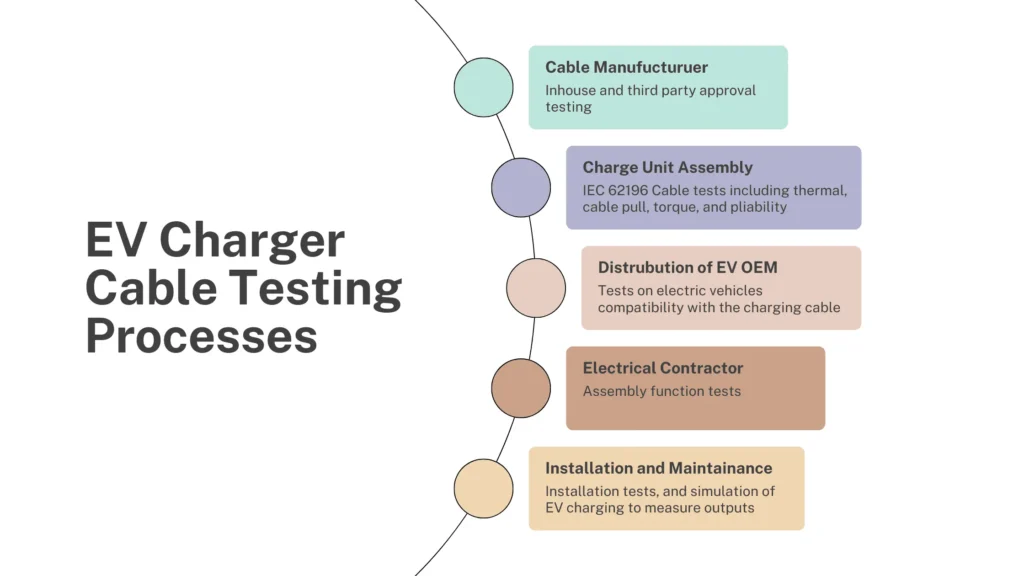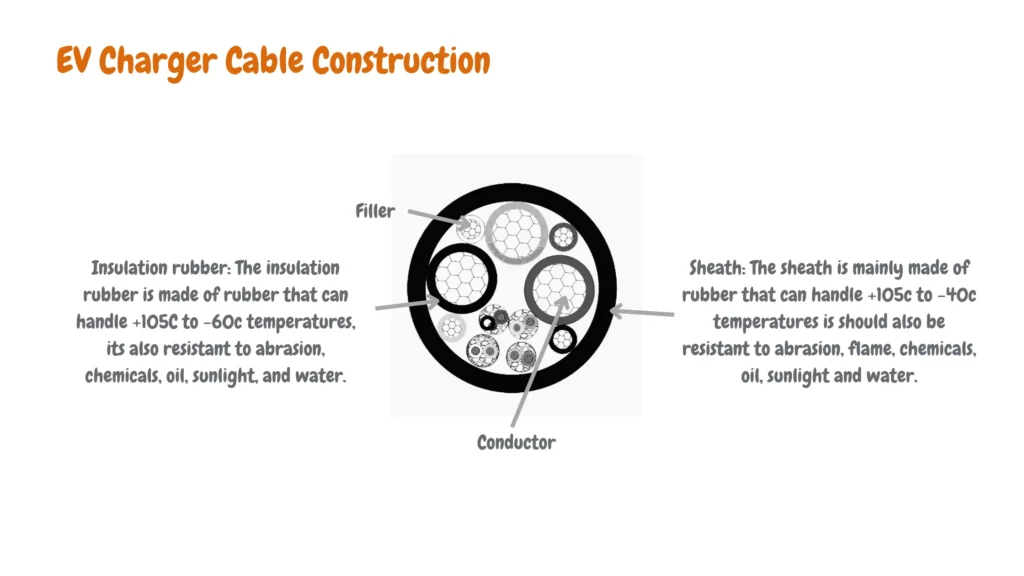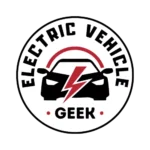EV charger cable pliability issues include tangling and knotting, reduced maneuverability, increased connector stress, cold weather performance, and negative user experience when charging their electric vehicles (EVs).
According to a recent J.D. Power report approximately 20.8 percent of electric vehicle (EV) users encountered charging disruptions or equipment issues while charging their electric vehicles, some of the issues that faced included station connectivity, internal station faults or errors, charging connector or cable issues, credit card reader and display issues as highlighted in the chart below:
EV charger cable pliability issues can be solved in the first process of choosing the right EV charging cable and the best EV home charger, the key lies in unlocking the secret of EV charger cable pliability.
We’ll delve into the science of pliability, exploring how materials, temperatures, and even cable length can impact your charging experience. We’ll equip you with the knowledge to choose the right EV charging cable and EV charger cable for your climate, whether braving sub-zero chills or scorching summer heat.
Plus, we’ll share expert tips on handling and storing your cable like a pro, ensuring it remains your loyal charging companion, not a frozen foe.
Understanding EV Charger Cable Pliability
In the context of EV charger cables, pliability denotes the charger cable’s capacity to flex easily without deforming or impacting its functionality. This includes facilitating smooth manoeuvrability, effortless coiling, and resilience against cold weather or constrained spaces.
EV Charging Cables Pliability Tests
There are two major tests that EV charger cables are subjected to: materials quality tests and functional tests, material quality tests are the first types of tests done on EV charger cables and are conducted in-house and through third parties for approval, functional tests later follow with the first functional test being IEC 62196 cable tests to access the temperature effects, cable pull, torque, and flexing.
The complete process of EV charging tests is shown in the flowchart below:

Similar to other wires and cables, bend testing for EV charging cables evaluates their flexibility, durability, and safety. This rigorous process ensures they meet industry standards and perform reliably over their lifespan.
Why is bend testing crucial for EV charging cables?
- Pliability: Charging stations are often located in tight spaces, requiring cables to bend frequently during usage and storage. Bend testing guarantees they maintain their flexibility without internal damage.
- Durability: Daily plugging and unplugging, exposure to extreme temperatures, and potential dragging create significant stress on the cable. Bend testing identifies weaknesses and predicts lifespan, preventing unexpected failures.
- Safety: A faulty cable can lead to overheating, sparking, and electrical hazards. Bend testing helps ensure the cable’s integrity under repeated bending, reducing safety risks for users and equipment.
Key aspects of bend testing for EV charging cables
Test types:
- Static bend test: Measures material properties like stiffness and yield strength.
- Dynamic bend test: Simulates real-world EV Charging bending scenarios, evaluating fatigue resistance and wear.
How We Test EV Charging Cables Pliability
Another test that we do is the Wrap-around Bend Test, which involves wrapping the cable around a specific diameter to inspect for any damage or defects. We also use the Swing Arm Bend Test to assess the cable’s flexibility by bending it over a set radius through a defined motion.
Factors Affecting Flexibility
- Material Composition: Different materials offer varying degrees of flexibility. For example, rubber cables are generally more flexible than PVC ones. The chosen material should balance flexibility with durability and safety requirements.
- Cable Diameter: Thicker cables are less flexible than thinner ones. Selecting the appropriate diameter depends on the desired flexibility while ensuring enough conductor size for the required charging power.
- Construction: The number and arrangement of conductors, insulation layers, and shielding impact flexibility. Manufacturers optimize construction to offer a balance between bendability and robustness.
- Ambient Temperature: Cold temperatures can stiffen the cable, reducing its flexibility. Testing considers this factor to ensure performance across expected temperature ranges.
EV Charger Cable Construction Materials

The type of material your cable is made of significantly impacts its flexibility. The most common options are:
- Rubber: Affordable and durable, but stiffens in cold temperatures, making it less ideal for harsh winters.
- PVC: More flexible than rubber, but prone to overheating and degradation in extreme heat.
- TPE (Thermoplastic Elastomer): TPE offers excellent flexibility across a wide temperature range, making it a top choice for year-round use.
Demystifying Charging Levels and Cable Gauges
To determine what size cable you need for your EV charger, you will first need to know how much power your vehicle can accept. This information can usually be found in your car’s manual or by contacting the manufacturer. In this case, a 2.5 mm² or 4 mm² cable would be suitable. While thicker cables (lower gauge number) offer higher power output, they tend to be less flexible.
Level 1 Charger Cable Gauges
Level 1 charging operates using a standard 120-volt outlet, akin to the outlets commonly found in households for powering various appliances. This type of charging method delivers up to 1.4 kW (kilowatts) of power and utilizes a current of 12 amps. While convenient for charging at home, Level 1 charging typically involves longer charging times due to its lower power output compared to higher-level charging options.
Level 2 Charger Cable Gauges
Level 2 charger cables step up the power and speed compared to Level 1 charging. It requires a 240-volt outlet, akin to what is commonly used for household electric dryers or ovens. This higher voltage enables Level 2 charging stations to deliver up to 19.2 kW (kilowatts) of power and can handle currents of up to 80 amps.
One notable aspect of Level 2 charger cables is the variation in cable gauge requirements, depending on the amperage. For instance:
- For 16 amps, a 14-gauge cable is sufficient.
- For 24 amps, a 12-gauge cable is recommended.
- For 32 amps, a 10-gauge cable is needed.
- For 40 amps, an 8-gauge cable is required.
- For 48 amps, a 6-gauge cable is necessary, though it often requires hardwiring.
These varying cable gauge requirements ensure safe and efficient power transmission during Level 2 charging sessions, catering to the diverse needs of electric vehicle owners.
Level 3 Charger Cable Gauges
Level 3 (DC Fast Charging) charger cables operate with high-voltage DC power, exceeding 350 kW and hundreds of amps. This necessitates special cables and connectors, not typically available for home use.
EV Charger Cable Length
Cable length and pliability are closely linked when it comes to EV charger cables, especially considering the 25-foot limit. As The National Electrical Code® (NEC) Section 625.17 (B) outlines, the cable connecting the electric vehicle to the charger must be a flexible cable of EV, EVJ, EVE, EVJE, EVT, or EVJT. The total usable length should not exceed 25 feet unless equipped with a cable management system integrated into the listed electric vehicle supply equipment (as per Section 625.17 (C)).
How Cable Length Affects Pliability:
Longer cables are inherently less pliable: The 25-foot limit addresses concerns about heat dissipation and voltage drop. However, longer cables, especially those required for handling higher currents (which typically have lower gauges), tend to be less flexible by nature.
Increased handling challenges: Longer, less pliable cables present practical challenges during connection and disconnection processes. They are more cumbersome to manoeuvre and are susceptible to tangling, kinking, storage problems, and damage, thereby increasing the risk of tripping hazards.
How Does Temperature Affect EV Charging Cable?
Extreme temperatures, whether hot or cold, can adversely affect the pliability and performance of cables.
In cold weather, cables stiffen, increasing susceptibility to damage from bending, while excessive heat can soften and degrade them.
To address these challenges:
- Cold Weather (Winter Woes):
- Choose EV charger cables with low-temperature flexibility ratings and materials like TPE to maintain suppleness in sub-zero conditions.
- Store cables indoors or in insulated spaces to prevent stiffening and cracking.
- Consider pre-warming your car’s battery before charging in very cold weather.
- Hot Weather (Scorching Summers):
- Opt for cables with heat-resistant materials such as heat-stabilized TPE or XLPE to withstand high temperatures.
- Avoid prolonged exposure to direct sunlight and allow the cable to cool down after charging to prevent damage.
- Moderate Climates (Temperate Tango):
- Select cables with a blend of materials like TPE and PVC for flexibility and durability across various temperatures.
- Choose an appropriate cable length to avoid excessive weight impacting flexibility.
- Regularly inspect cables for wear or damage, especially after exposure to extreme temperatures.
When selecting an EV charger cable, consider your climate and its challenges. Look for cables with suitable materials and ratings, and prioritize regular maintenance to ensure longevity and safety. Additionally, checking for NEMA ratings can help determine a cable’s suitability for outdoor use in various weather conditions.
EV Charger Cable Management
Your EV charger cable is more than just a wire; it’s the key to unlocking convenient and reliable charging. But like any good tool, it needs proper care to maintain flexibility and performance.
Here are expert tips to keep your cable in top shape:
- Handle with care: Avoid excessive bending and kinking, and be mindful of weight.
- Store properly: Coil loosely, store indoors, and clean regularly to prevent damage from dirt and dust buildup.
- Adapt to seasons: Bring indoors in cold weather and shield from direct sunlight in hot climates.
For efficient cable management, consider:
- Use an EV charger cable organizer, holder, ties, or clips.
- Installing a retractable reel for easy extension.
- For multiple or dual EV Chargers label cables for quick identification.
- Keeping EV charging cables in designated storage spaces.
- Use a padlock for security and mount cables along walls or ceilings for security, neatness, and space-saving.
EV Charger Cable Standards
Several international and European standards are crucial for ensuring EV charger cables’ safety, reliability, and durability.
Here’s a brief overview of some key standards certifications that together offer a complete EV Charger cable assessment:
- IEC 62893 Series: This comprehensive series defines general requirements, dimensions, and testing procedures for EV charger cables. It covers aspects like construction, electrical properties, and mechanical performance.
- EN 50620: This European standard focuses on safety requirements for EV charger cables. It addresses electrical, mechanical, and environmental aspects, including protection against electric shock, fire hazards, and environmental stresses.
- BS EN 50620 Annex F & IEC 62893-2 (Weathering/UV): These sections specifically address the cable’s ability to withstand harsh weather conditions, including sunlight and ultraviolet radiation, ensuring long-lasting performance and safety.
- IEC 62893-2, BS EN 50620 Annex D (Chemicals): These standards assess the cable’s resistance to various chemicals it might encounter, such as fluids, cleaning agents, and fuels, preventing degradation and potential hazards.
- IEC EN 80811 – 404 (Mineral Oil Immersion): This standard tests the cable’s ability to withstand immersion in mineral oil, which is relevant for situations where cables might be exposed to lubricants or fuels.
- IEC EN 60811-503 (Shrinkage) and IEC EN 80811-507 (Hot Set): These standards evaluate the dimensional stability of the cable under various temperature conditions, ensuring proper fit and function.
- IEC 62893-2, EN 50620 Annex C (Cold Impact): This section assesses the cable’s performance at low temperatures, critical for cold climates where cables might become brittle.
- IEC 60811 (Heat Shock): This standard tests the cable’s ability to withstand rapid temperature changes, preventing potential damage.
- ISO 48 for EVI-2, ISO 7619-1, or HD605:S2 for EVI-1 (Shore hardness): This assesses the cable’s material stiffness, influencing flexibility and handling characteristics.
- IEC EN 60332-1-2 (Vertical Frame Propagation): This standard evaluates the cable’s fire resistance, preventing flame spread and ensuring safety in case of fire incidents.
- BS EN 50525-1, and IEC 62821-1 (Assessment of Halogens): These standards limit the use of halogenated materials in the cable, reducing the risk of toxic fumes during fire events.
- IEC EN 60228 (Conductor Resistance): This standard ensures the conductor material has minimal resistance, minimizes energy losses, and maintains efficient power transfer.
- IEC 60245-2, and EN 50395 (Voltage Tests): These standards test the cable’s ability to withstand high voltages, preventing electrical breakdowns and ensuring safety.
EV Charger Cable Management Kits
We recommend two EV Charger Cable Management Kits: the Alpha Rider EV Charger Holder and the voCharge Home Cable Management Kit.
Alpha Rider EV Charger Holder
Alpha Rider EV Charger Holder
EVoCharge EV Charging Cable Management Kit
EVoCharge EV Charging Cable Management Kit
Conclusions
So, there you have it! Navigating the EV charger cable pliability world doesn’t have to be a tangled mess. Remember, understanding the key factors like materials, temperature, and length empowers you to choose the right cable for your car and climate. Embrace the flexibility heroes: TPE cables for year-round versatility, low-temp ratings for winter warriors, and heat-resistant materials for summer sizzlers.
Embrace expert care – gentle handling, loose coiling, and mindful storage – to keep your cable supple and reliable. Conquer common concerns – ditch extension cords, avoid DIY repairs on damaged cables, and prioritize safety first. Remember, a happy cable means a happy charging experience!
Don’t let cable confusion hold you back! Use this newfound knowledge to confidently choose the perfect EV charger cable and easily embark on your electric journey. Remember, a little pliability goes a long way – it’s the key to unlocking smooth, stress-free charging, no matter where the road takes you.

About the Author: James Ndungu
James Ndungu, founder and editor-in-chief of Electric Vehicle Geek, brings over five years of hands-on experience in Electric Vehicle Supply Equipment (EVSE) selection, permitting, and installation. He specializes in assisting businesses and homeowners in the United States with a seamless transition to electric vehicles.
As a certified EV charger installer and holder of advanced certifications, including the EVITP (Electric Vehicle Infrastructure Training Program), Diploma in Electric Vehicle Technology, and Diploma in Engineering Fundamentals of Electric Vehicles, I provide expert guidance and in-depth reviews on the latest EV charging equipment.










